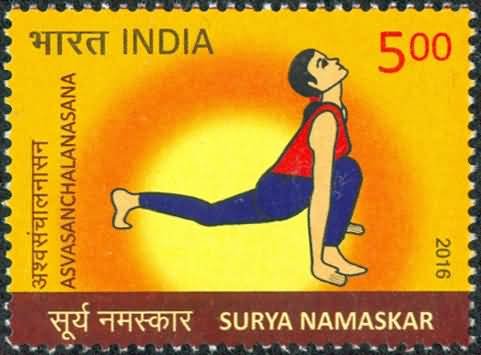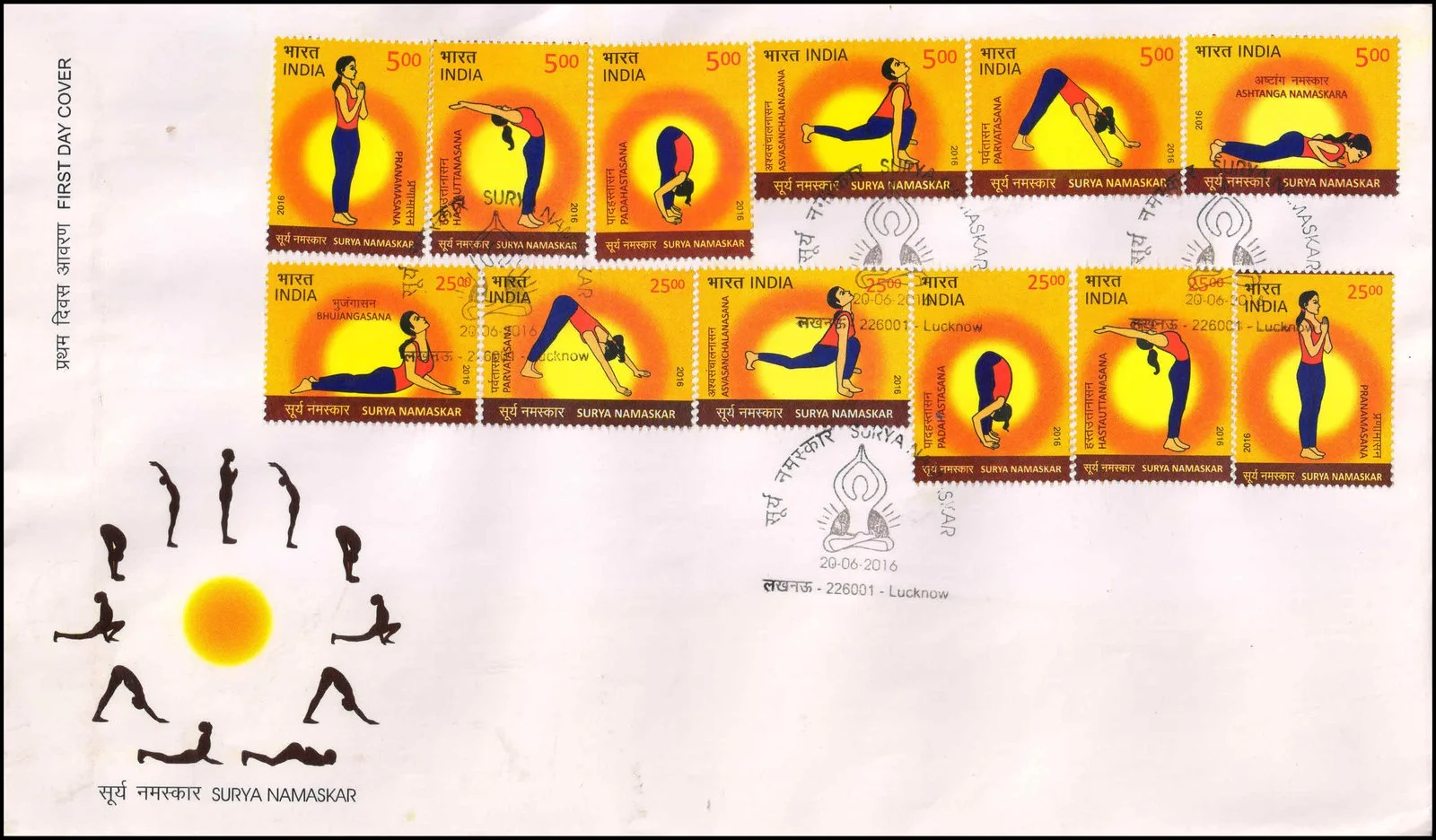Asvasanchalanasana

Technical Data
| Stamp Set | Surya Namaskar |
|---|---|
| Date of Issue | June 20, 2016 |
| Denomination | Rs. 5 |
| Quantity | 300,000 |
| Perforation | 13¾ x 13¼ |
| Printer | Security Printing Press, Hyderabad |
| Printing Process | Wet Offset |
| Watermark | No Watermark |
| Colors | Multicolor |
| Credit (Designed By) | Ms. Nenu Gupta |
| Catalog Codes |
Michel IN 2969A Yvert et Tellier IN 2683 Stanley Gibbons IN 3140 |
| Themes | Women |
Introduction
Asvasanchalanasana, popularly known as the Equestrian Pose, is the fourth and ninth position in the Surya Namaskar sequence. The Sanskrit words ‘Ashwa’ mean horse and ‘Chalan’ means movement or riding, symbolizing the strength, grace, and alertness of a horse. This asana embodies vitality and balance, helping the practitioner develop stability, confidence, and coordination between body and mind.
Origin and Significance
Rooted in ancient yogic traditions, Asvasanchalanasana symbolizes readiness and forward movement in life—just as a rider mounts a horse with focus and determination. The posture stimulates energy in the body, awakens dynamism, and strengthens willpower. It also represents a harmonious blend of grounding (through the supporting legs) and upward expansion (through the lifted chest and gaze).
How to Practice Asvasanchalanasana
- From Padahastasana, place the palms firmly on the floor beside the feet.
- Stretch the right leg back as far as possible, keeping the left foot forward with the knee bent at a right angle.
- Lower the right knee to the floor and point the toes backward.
- Keep the arms straight, chest open, and tilt the head back while arching the spine gently.
- Direct the inner gaze upward to the eyebrow centre (Bhrumadhya) for enhanced focus and awareness.
- In the ninth position (return sequence), repeat the posture by bringing the left leg back forward instead.
Maintain the posture with steady breathing and awareness of the stretch from the thigh to the chest.
Benefits of Asvasanchalanasana
Asvasanchalanasana builds flexibility, balance, and concentration by opening key muscles and energy channels of the body.
Physical Benefits
- Strengthens legs, knees, calves, and thigh muscles
- Improves flexibility of the hip joints and groin region
- Enhances spinal strength, posture and balance
- Expands the chest and improves lung capacity
Internal System Benefits
- Stimulates digestive organs and improves digestion
- Activates core muscles and tones abdominal region
- Boosts blood circulation and energises the body
Mental and Emotional Benefits
- Promotes focus, confidence, and readiness to act
- Enhances mental clarity and determination
- Encourages emotional balance and inner courage
Role in Surya Namaskar
As the fourth and ninth posture, Asvasanchalanasana serves as a transition that shifts the body from forward bending to dynamic stretching and balancing. It opens the heart and chest, helping regulate pranic flow through the body. This asana activates vitality, prepares the legs and spine for further postures, and aligns physical movement with mindful awareness—maintaining the smooth, rhythmic flow of Surya Namaskar.
Conclusion
Asvasanchalanasana is a powerful pose that combines physical strength, flexibility, and mental alertness. It nurtures balance, courage, and vitality while strengthening the lower body and opening the chest. Practiced regularly as part of Surya Namaskar, it awakens dynamism, improves posture, deepens breath, and supports both physical and mental well-being.
Commemorative Stamps on Surya Namaskar
To mark International Yoga Day on 21 June 2016, the Department of Posts released a set of 12 Commemorative Postage Stamps, each depicting one of the 12 positions of Surya Namaskar highlighting Yoga’s cultural and spiritual significance.
First Day Cover

